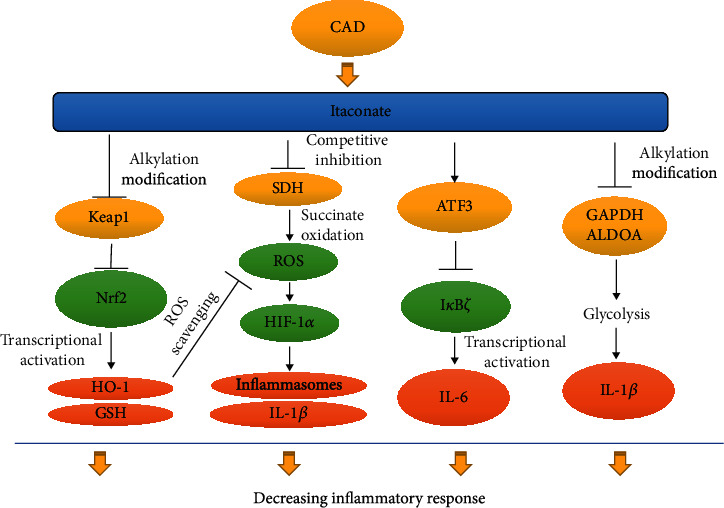Figure 3.

The relevant signaling pathway in itaconate-induced anti-inflammatory and antioxidative effects. Itaconate is promoted in macrophages activated by stimuli like LPS via increasing CAD transcription. Increasing itaconate activates the Nrf2 pathway via alkylation Kelch-like ECH-associated protein 1 (Keap1), which induces the transcription of various Nrf2-dependent antioxidant and anti-inflammatory genes, such as HO-1 and GSH. Itaconate can also inhibit succinate dehydrogenase (SDH) and reduce ROS generation and, consequently, IL-1β secretion by activation. Itaconate promotes the transcription of activating transcription factor 3 (ATF3), which directly inhibits IκBζ expression and leads to decreasing IL-6. In addition, itaconate directly alkylates the cysteine residue 22 of GAPDH and ALDOA to inhibit glycolysis, thereby mitigating the inflammatory response.
